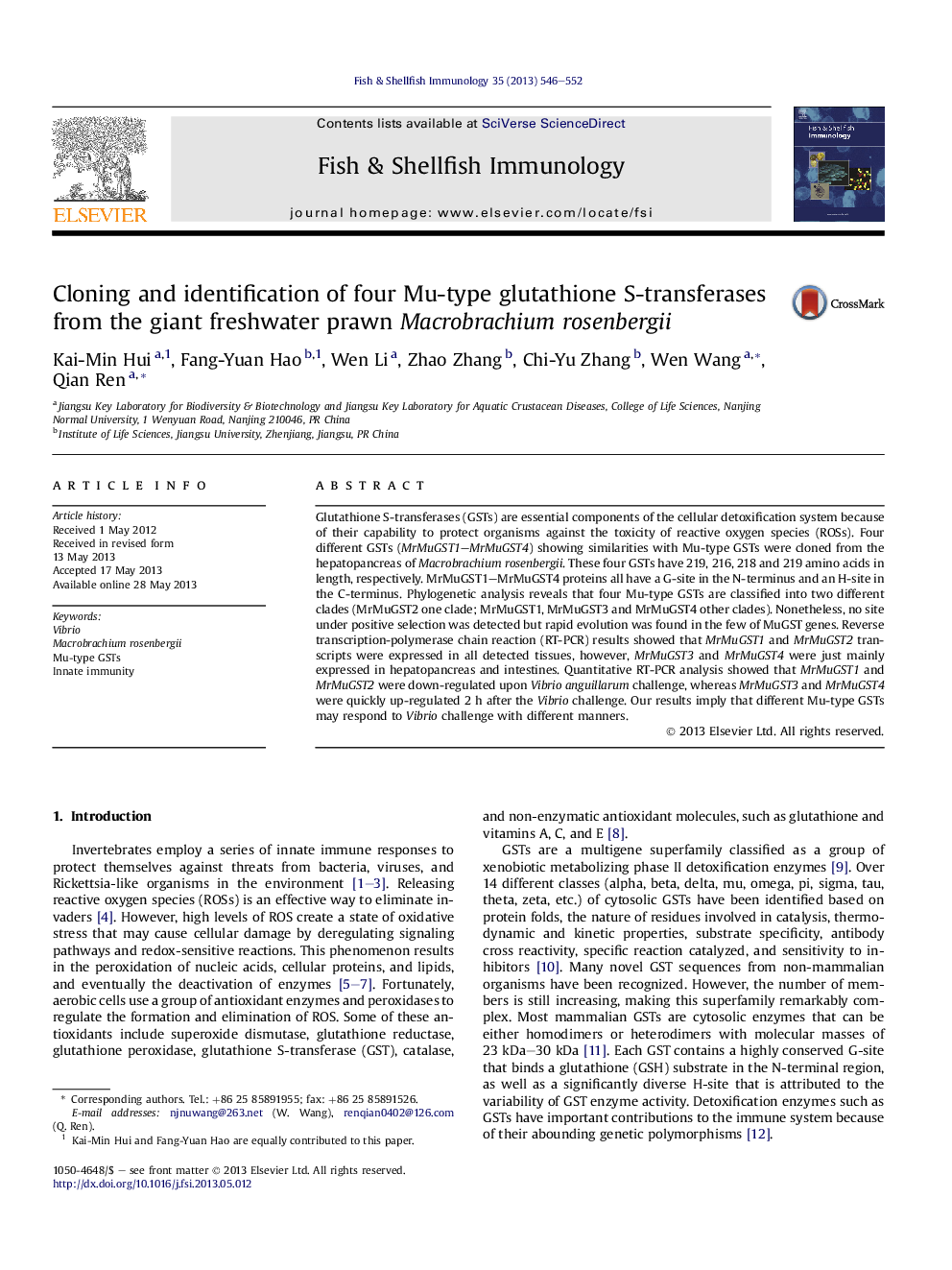| Article ID | Journal | Published Year | Pages | File Type |
|---|---|---|---|---|
| 2431788 | Fish & Shellfish Immunology | 2013 | 7 Pages |
•Four Mu-type GST genes from Macrobrachium rosenbergii were identified.•Four Mu-type GSTs are classified into two different clades.•No site under positive selection was detected but rapid evolution was found in the few of MuGST genes.•Mu-type GSTs may respond to Vibrio challenge.
Glutathione S-transferases (GSTs) are essential components of the cellular detoxification system because of their capability to protect organisms against the toxicity of reactive oxygen species (ROSs). Four different GSTs (MrMuGST1–MrMuGST4) showing similarities with Mu-type GSTs were cloned from the hepatopancreas of Macrobrachium rosenbergii. These four GSTs have 219, 216, 218 and 219 amino acids in length, respectively. MrMuGST1–MrMuGST4 proteins all have a G-site in the N-terminus and an H-site in the C-terminus. Phylogenetic analysis reveals that four Mu-type GSTs are classified into two different clades (MrMuGST2 one clade; MrMuGST1, MrMuGST3 and MrMuGST4 other clades). Nonetheless, no site under positive selection was detected but rapid evolution was found in the few of MuGST genes. Reverse transcription-polymerase chain reaction (RT-PCR) results showed that MrMuGST1 and MrMuGST2 transcripts were expressed in all detected tissues, however, MrMuGST3 and MrMuGST4 were just mainly expressed in hepatopancreas and intestines. Quantitative RT-PCR analysis showed that MrMuGST1 and MrMuGST2 were down-regulated upon Vibrio anguillarum challenge, whereas MrMuGST3 and MrMuGST4 were quickly up-regulated 2 h after the Vibrio challenge. Our results imply that different Mu-type GSTs may respond to Vibrio challenge with different manners.
